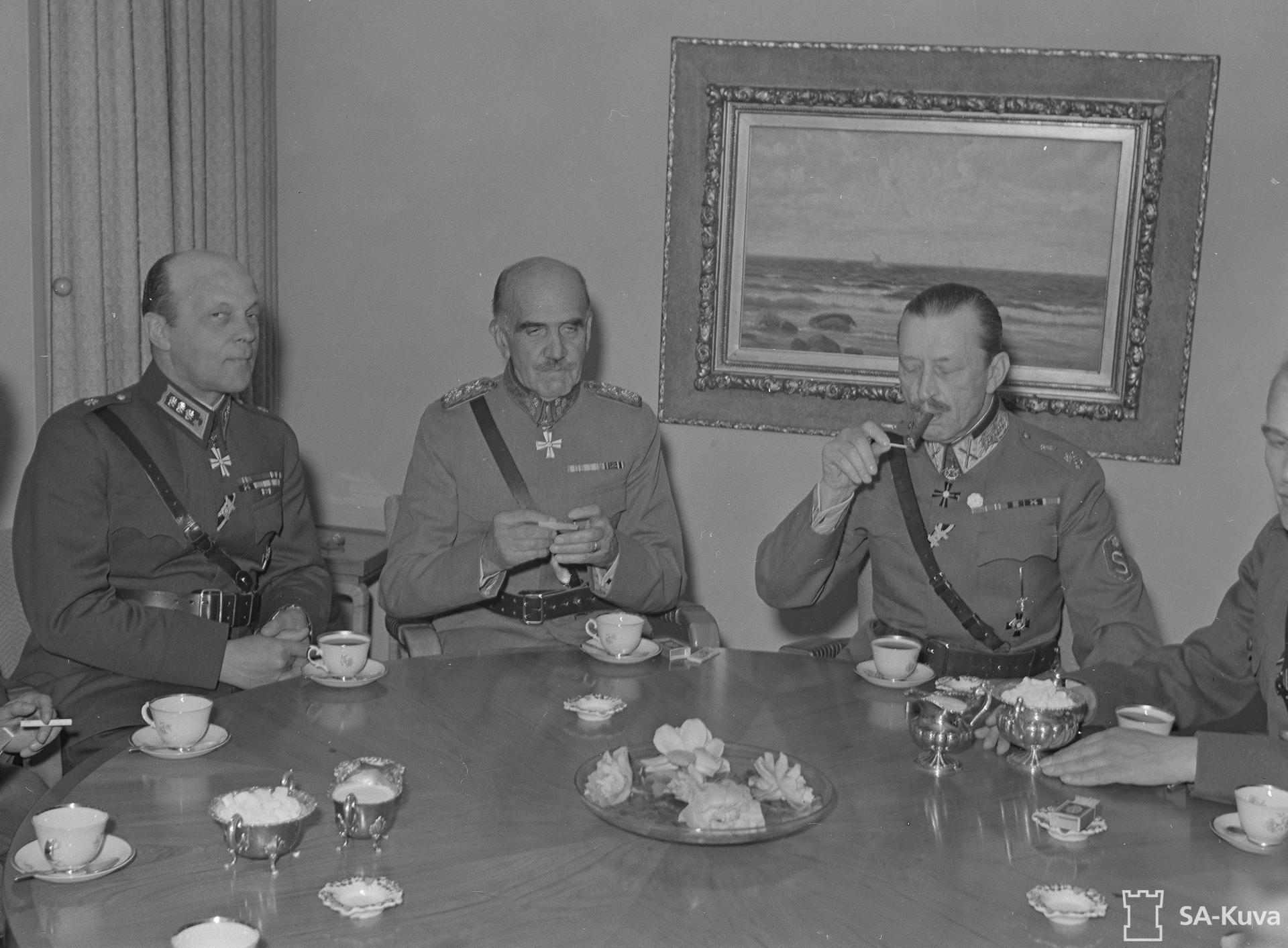Immerse yourself in history with Mannerheim's story meals
The story meals at Mikkeli Headquarters expand on two important aspects of our history: food and war. Meals are not only a way to satisfy hunger – they play a significant role in international relations and diplomacy.
Baron Gustaf Mannerheim – Commander-in-Chief and Marshal of Finland – was well used to all forms of dining: as a soldier on the frontlines, as an explorer in Asia, in the Imperial Russian Court, and as an international aristocrat. He knew that every meal had its own place and purpose.
Mikkeli Headquarters story meals describe eleven meals from the Second World War, to tell eleven stories about Finland during those times. They are based on notes made by Gustaf Mannerheim's adjutant, O. R. Bäckman, which are preserved in Mannerheim's archives. These notes contain information about 130 of the lunches and dinners enjoyed at the Mikkeli Club, mainly in 1944. The archives hold some official menus and programmes for visits made to Mikkeli Headquarters, such as those by the President of the Republic of Finland, Crown Prince Gustav Adolf of Sweden, and German High Command.
Book a guide to tell you more about the meal, the people who were dining, that era of Finnish and world history, and what Mannerheim's party may have discussed at that particular lunch or dinner.
Learn more about story meals at Mikkeli Headquarters (in Finnish).
